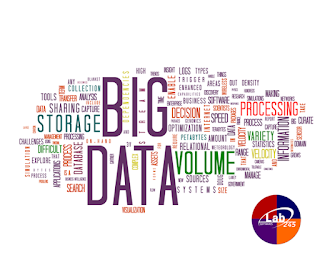The
subject Big Data is in vogue and it is no coincidence that society has
been waiting for this type of solution for a long time and we just did
not have the technology for it.
I'll try to explain the phenomenon by the end of this post:
We use Big Data for intricate diagnostics.
This means that we use technology to learn more about natural
phenomena, about organisms, about market trends, too complex subjects so
that theorists can create accurate mathematical models that can be used
by practitioners to detect a trend.
In the scientific environment, we call the inverse problem the attempt
to understand a phenomenon from some peripheral measurements.
To solve an inverse problem you need to have data, and the more data
you give, the more precise the modeling will be and the better the
prediction will be. Yes, the name is even prediction!
But having data is not enough, it is necessary to have algorithms to
find the model that best suits the phenomenon that one wishes to
reproduce.
And this is not a trivial problem, after all with the same data,
several scenarios are possible, but they are not equally likely!
In this way, the algorithm search focuses on maximum probability
methods, assuming that it will be the best solution for a set of
measures or data.
These algorithms use complex numerical methods, which are more
accurately employed if the initial modeling takes into account the data
obtained under different conditions.
To summarize: Big Data is a science that tries to create mathematical
models about phenomena with many variables, models that will be used in
prediction.
Thus, a large volume of data, applied in probabilistic origin
algorithms, using optimized numerical methods and an infrastructure
capable of processing many operations in a short time, generates a model
that will be used to predict (or even provoke) new behaviors.
Therefore, Big Data tools do not have as much power if we do not have
an excellent body of data analysts, since information must be placed
precisely at points of entry for the learning or prediction model to be
worth.
For better understanding, it would be like trying to do a CT scan with a
patient moving all the time, the result will not be good. Only in most real problems, we can not control the phenomenon as we do with a patient on a stretcher.
Applications of Big Data are numerous: from scientific research, market
trends, public opinion, economics, meteorology to real-time supply
chain analysis, sales forecasting, personalized marketing, etc.
Remembering that choosing a tool is only a small step to get results with this technology.
Among other companies, Lab245 offers data analysis and Big Data tool in cloud computing platform in Brazil.

Comentários
Postar um comentário